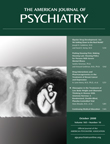Michael Trimble has worked on the border of psychiatry and neurology for his whole career and is one of the figures who have truly blurred the border between biological psychiatry and behavioral neurology. In his new book, The Soul in the Brain, he promises to extend his accomplishments to the burgeoning field of neurotheology. However, the author waits until almost the end of the book to discuss “where God is thought to dwell or where our soul resides waiting for transportation,” stating, “There is no such center; in fact no brain centers for anything are known” (p. 198). Therefore, the book’s subtitle, “The Cerebral Basis of Language, Art, and Belief,” is a much better description of the book.
The book reviews the neuroanatomy of the limbic system, other emotional areas of the brain, and the anatomical basis of language. Language, in fact, takes up three of the nine chapters and is clearly a central interest of the author. The issue of mental illness and creativity is well reviewed, and there is a nice chapter on music and the brain. The religious preoccupations of patients with epilepsy are described, although the author does not succeed in putting this psychopathology in either a neuroanatomic context or the evolutionary context he promises in the introduction to the book.
The book could be described as falling somewhere between a highly systematic compilation, such as the
Oxford Textbook of Philosophy and Psychiatry (1), and Oliver Sacks’s collection of interesting case histories,
The Man Who Mistook His Wife for a Hat and
Other Clinical Tales (2) . The book extols the accomplishments of neuropsychiatry in the last generation but seems less aware of potential limits to our understanding of the complexity of the brain, such as is occurring in physics, mathematics, and philosophy. Therefore, one does come away with the feeling that the author is trying to “explain away” religion. The literature on the potential health benefits of religious belief are not referred to. Missing in the book also is reference to the exploding literature on the evolutionary value of altruism in human beings, the molecular biology of differences in altruistic behavior between individuals
(3), and the imaging correlates of altruistic or nonaltruistic decision making using fMRI.
I would not recommend this book to students in a pastoral psychology course nor to a patient or student struggling with his own religious belief. I would recommend it to readers educated in the humanities or social sciences who are unaware of the huge areas of overlap between brain function and human experience and who would find this book a stimulating introduction.

